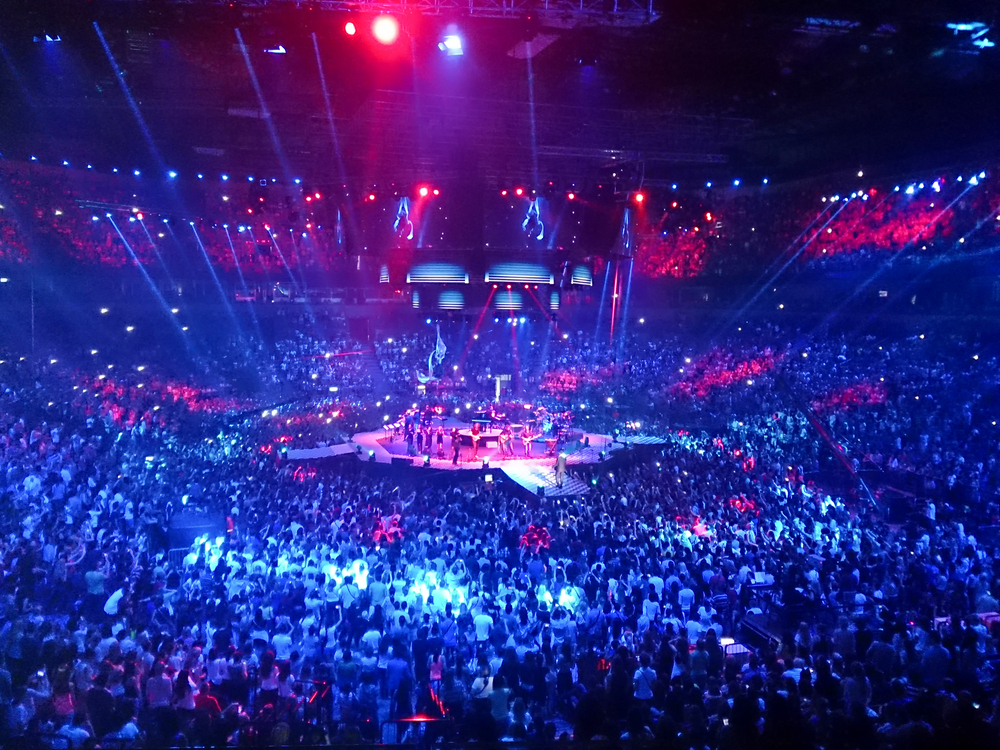Felix Berndt, Regional Sales Manager of Asia Pacific, Paessler
Thailand has emerged as a prominent destination for live music enthusiasts, consistently hosting a remarkable number of concerts across the country. In the first half of 2024, Thailand had many exciting live music concerts and festivals. Global superstars like BamBam, Bruno Mars, Coldplay, and Ed Sheeran performed fascinating shows at Rajamangala National Stadium. Interestingly, Thai and South Korean artists reign supreme in Thailand’s concert landscape, captivating audiences with their electrifying performances.
As technologies evolve, large-scale concerts are going beyond the music itself and becoming more about creating unforgettable experiences for its attendees. While stadiums are great canvases to bring this to life, they make for complex environments, especially during concerts. Behind the scenes, every concert is a carefully orchestrated spectacle supported by intricate IT infrastructures that coordinate everything from audiovisual effects during the show to managing ticketing, crowd control, and connected devices across the grounds. At the center of this highly elaborate operation is IT monitoring, ensuring the show goes on without a hitch. Picture it as an orchestra conductor directing a flawless performance behind the scenes.
In Thailand, most stadiums are not designed to accommodate large-scale concerts. Consequently, extensive preparations are required months in advance of each event, involving the installation of sound systems, lighting rigs, special effects equipment, and control rooms. This process of setting up everything anew introduces inherent uncertainties and increases the risk of technical issues arising at any given moment.
Comprehensive visibility through simplicity
Ticket sales, admission gates, arena services, floodlight control, radio, contactless
payments, video analysis systems, and in-show exhibitions that vary across shows – stadiums today are much more than just the grounds, the stands, and the crowd. Many of these elements usually lie outside the scope of most monitoring tools, which cover IT standards exclusively. Unless stadiums proactively update their infrastructural monitoring systems, they are likely to be operating with traditional protocols that lack true visibility across the entire network.
As digitalization picks up pace, Information Technology (IT) and Operational Technology (OT) are increasingly becoming the basis for components and departments that were previously analog. With stadium events growing larger in scale, more of these devices need to be included in the network, making comprehensive monitoring critical for high-quality experiences. This trend leads to an increasing responsibility for IT teams. They need to always be informed of the status and performance of all IT and stadium technology and be promptly notified in the event of disruptions – not only about the type, but also the cause and location. Such notifications are only possible if digitalized environments and IT are monitored with a single monitoring system, and if this system can maintain a comprehensive overview. Furthermore, the more simplified the visualization of the entire infrastructure, the easier it is to detect and solve problems.
Why IT Monitoring is key
In the electrifying world of large scale stadium events, where everything needs to run smoothly, reliability isn’t just important, it’s essential. Picture this: thousands of eager fans, pulsating energy, and the stage set for an unforgettable performance. Now, imagine that energy is suddenly disrupted by a technical glitch that disrupts the show and leads to several minutes of downtime. This is not just a hiccup, it’s a major setback. This is where IT monitoring proves necessary, as it quietly makes sure everything stays on track behind the scenes. It keeps a vigilant watch over critical systems, detects anomalies, and swiftly flags or addresses potential issues before they even have a chance to disrupt the flow.
IT monitoring systems provide a unified platform to monitor both traditional IT networks and infrastructure, comprising servers, databases, storage systems, firewalls, switches, and backup systems as well as modern stadium technology. Additionally, when leveraging advanced IT monitoring solutions, venue operators typically gain access to a wide array of pre-configured sensors and predefined device templates, designed to streamline monitoring processes. By integrating data from these various sources and having everything at a glance, venue operators are able to take a unified approach that allows for optimal resource allocation and capacity planning, minimizing the risk of bottlenecks and ensuring a smooth flow of operations during concerts.
Additionally, IT monitoring systems also offer real-time insights into the performance of critical infrastructure components. This also includes customizable visual dashboards and maps specifically designed for stadium-wide monitoring. Like diligent overseers, these systems monitor the heartbeat of network servers, the functionality of audio-visual equipment, and the efficiency of ticketing systems. By tracking key metrics such as latency, bandwidth utilization, and system availability, venue operators are enabled to preemptively address potential issues before they can occur, guaranteeing uninterrupted experiences for attendees.
The benefits for concert-goersThe continuous monitoring of stadium technology and IT contributes greatly to the convenience and enjoyment of fans during concerts, even if they are watching the show from their homes.
1.Arrival at the stadium: IT monitoring solutions monitor the admission gate systems (including turnstiles) to ensure all fans make it into the stadium well before the show kicks off.
2.Finding seats or standing areas: Stadium sign systems are also under the purview of modern IT monitoring systems. This not only provides for extra convenience, but also security.
3.Audio-visual attractions: Most concerts today include audio-visual enhancements to delight fans. While technical engineers are usually pulling the strings, IT monitoring systems ensure that all the tools necessary for engineers to pull off these attractions are working without issues.
4.Food & beverages: IT monitoring systems help ensure that cash register systems, printers, power supply, and networks are working properly at the stands.
5.Broadcasting: Many times concerts are broadcast live across social media, TV channels, and more. Through monitoring solutions, IT teams make sure that networks and devices necessary to transmit content around the world are doing so in time and without any lag.
As technology continues to redefine the limits of entertainment, the role of IT monitoring within the larger stadium ecosystem is indispensable. From powering digital innovations to ensuring the reliability and security of critical infrastructure, they are the silent architects that enable seamless and unforgettable concert experiences. As Thailand continues to host world-class musical acts, the importance of IT monitoring in concert stadiums will only grow, ensuring that audiences can continue to enjoy unforgettable performances without any unwelcome disturbances.
Learn more about Paessler and its products at www.paessler.com.

